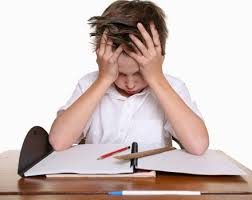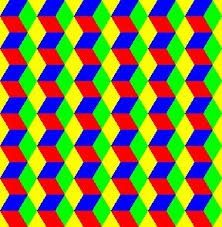I’m sure most of us can relate to the overwhelming feeling of distress and confusion when being asked a maths question and knowing you are going to get the answer wrong, or when staring at a set of questions in a textbook and being completely clueless of where to start, sending your brain into panic mode. What exactly is this feeling? Although many of us experience this throughout our time in school, most are unaware that Maths anxiety is a recognised condition which can be overcome and prevented.
What is Maths Anxiety?
Maths anxiety can be defined as “as a feeling of tension, apprehension, or fear that interferes with math performance.” (Ashcraft, 2002) or “a general fear of contact with mathematics, including classes, homework and tests” (Hembree, 1990).
In 2012 it was found that a quarter of the UK’s population were effected by math anxiety, and 2 million children in England alone (Brain, 2012). Not only does maths anxiety effect huge numbers of children within our classrooms, many of today’s school teachers also suffer from some degree of anxiety towards mathematics.
There are various Psychical and Physiological symptoms associated with Maths Anxiety, some of which include:
- Headaches

- Increased heart rate
- Shortness of breath
- Confusion
- Mind blanks
- Inability to concentrate
What causes maths anxiety?
Maths anxiety can be caused by various different factors, and each individual who suffers with this will have their own reasons why. For many people anxieties are due to environmental factors such as school, home life parents and teachers. For some, their anxiety stems from parents attitudes or fears towards maths, if a child is brought up in a setting in which a parent has a negative attitude or feeling towards maths, it I extremely likely this will be passed on, and the child will then go into maths with the same negative attitude and concern. This is the same as if a class teacher feels negatively or has insecurities with maths, children are able to sense when a teacher is not confident with what they are teaching, and if basic principles are not taught correctly this can lead to children then lacking fundamental knowledge and confidence, leading to anxieties. Also in terms of within the classroom and the class teacher, many children’s anxiety comes from the idea of being wrong and the embarrassment of doing badly, if a child is asked a question in front of a full class and gets its wrong, this embarrassment is likely to lead to a massive loss of confidence. Children within a classroom should be made to feel comfortable in that they can always attempt a question and if they are not correct the first time this is not something they should feel ashamed off, the way to success is by making mistakes and learning from these.
My experience with maths anxiety
For me specifically, maths anxiety was never something I suffered with or experienced throughout my time in primary school, it was a subject area which I thoroughly enjoyed and felt like I was confident in, up until secondary school maths was something I found enjoyable. It wasn’t till around my third year of high school that maths began to become an issue for me personally. As the difficulty of what I was learning increased to much more challenging concepts and areas of maths, my confidence in my own ability severely went downhill and all enjoyment I once felt for maths was lost, walking into the maths classroom began to be the most daunting part of the day. Despite this growing stress, I chose to continue maths to Higher level, this was when maths anxiety became a massive problem for myself. One thing I remember very vividly to have affected me in terms of my confidence in maths was is being told “you will need a miracle to be able to get a pass in this subject” by my teacher at the time. From that point on I was convinced I was completely unable and therefore completely shut off and lost all concentration in the subject to avoid the distress it was bringing me. Much to my surprise I passed (luckily being over the pass mark by only 1 mark), although I was shocked and proud to have proven my teacher wrong, this result was a massive disappointment in comparison to the A I had gained at national 5 level. Due to this, the moment I stopped studying maths I was convinced I no longer needed to think about it and tried to shut it out of my life as much as possible, but due to this I now feel like I have lost most of the knowledge and ability I once had, now even relying on a calculator for simple maths sums.
Overcoming maths anxieties
According to Lee (2017), there are 6 ways as a parent or teacher that you can help a child to overcome their maths anxieties:
- Playing maths games – playing maths games or games centred around numbers is a great way to get children much more involved and interested in learning maths, by putting it into a fun context which they will enjoy rather than dread.
- Be aware of your own attitude towards maths – children are watching and learning from you, if you are expressing or giving off negative feelings towards maths rather than talking about the fun and positive applications and importance of maths, children will be aware of this and will therefore be at a disadvantage.
- Practising with the child – The best way to improve confidence and skill when it comes to basic maths principles is by ongoing practise. By bringing maths practise in to daily life or into other areas of the school curriculum this can significantly improve the child’s performance without explicitly doing maths.
- Get rid of the idea “some people are not good at maths” – This is a very important part of helping a child overcome maths anxiety, the moment they feel like they “cant do” maths is when they completely give up. We must eliminate the idea that some people simply are bad at maths.
- Get help early– As a teacher or parent if you see a child struggling, it is best to provide them with extra help as soon as possible to try and prevent any math anxieties developing. A good example of this is by getting an out of school tutor or even an older pupil to provide extra help for the child at certain times during the school day.
- Help the child to shake off mistakes – One of the best things to do is assure the child mistakes are something that will naturally happen and that are positive learning opportunities, not embarrassments.
I feel that in recent years maths anxiety has began to affect me more than it ever has especially the closer I get in my journey to becoming a teacher, and I understand this is something I must constantly be trying to overcome in order to confidently and effectively teach maths in the future, I feel my engagement with this module so far has helped me to begin to overcome this and develop an understanding of fundamental mathematics. I must now continue to build my knowledge and understanding to a point where I can teach mathematics confidently to prevent any maths anxieties i once felt to be passed on to pupils, and to also effectively help pupils overcome any anxiety they feel towards mathematics and allow them to reach their full potential.
References
Ashcraft, M. (2002) Math Anxiety: Personal, Educational, and Cognitive Consequences. Available at: http://journals.sagepub.com/doi/pdf/10.1111/1467-8721.00196 (Accessed: October 2017)
Brian, K. (2012) ‘Maths Anxiety: the numbers are mounting’, The Guardian, 30 April. Available at: https://www.theguardian.com/education/2012/apr/30/maths-anxiety-school-support (Accessed; October 2017)
Hembree, R. (1990) ‘The nature, effects and relief of mathematics anxiety’, Journal for Research in Mathematics Education, 21, pp.33-46.
Lee, K. (2017) How You Can Help a Child Who Has Math Anxiety. Available at: https://www.verywell.com/how-you-can-help-a-child-who-has-math-anxiety-620833 (Accessed: October 2017)





